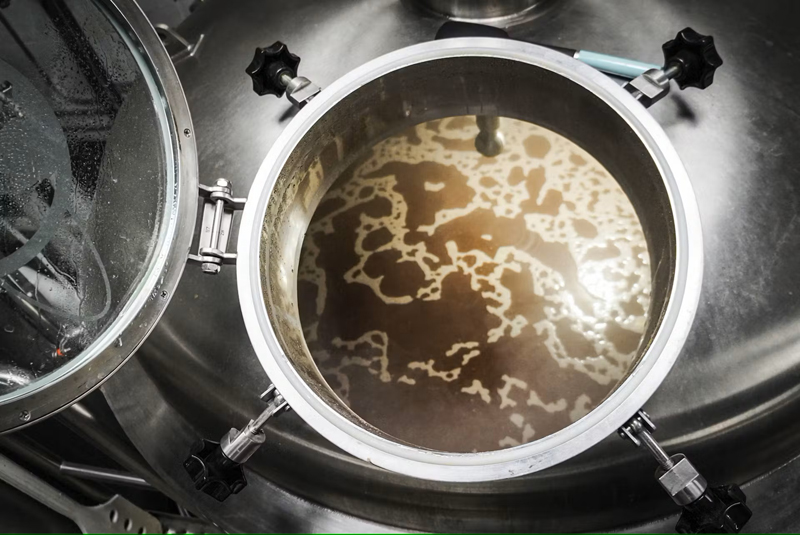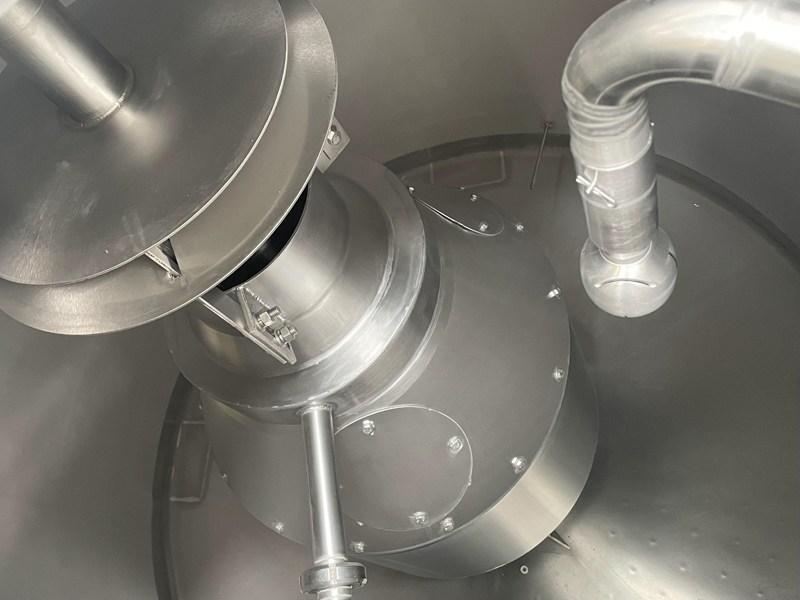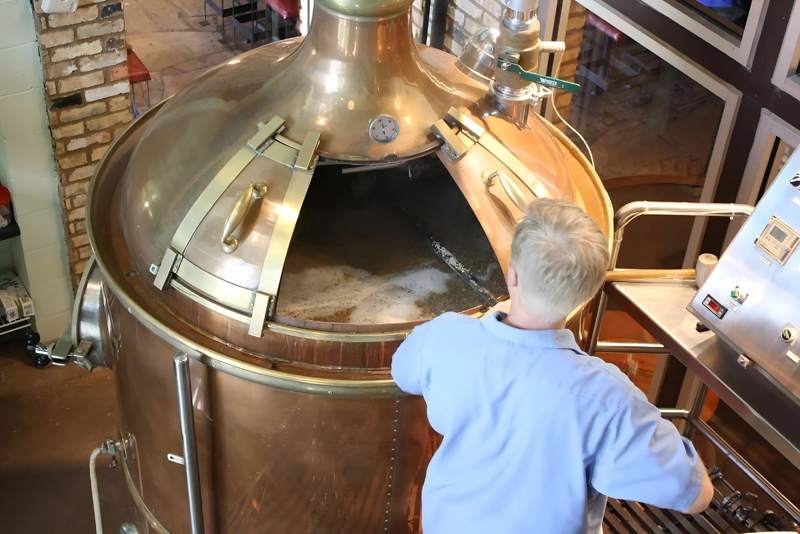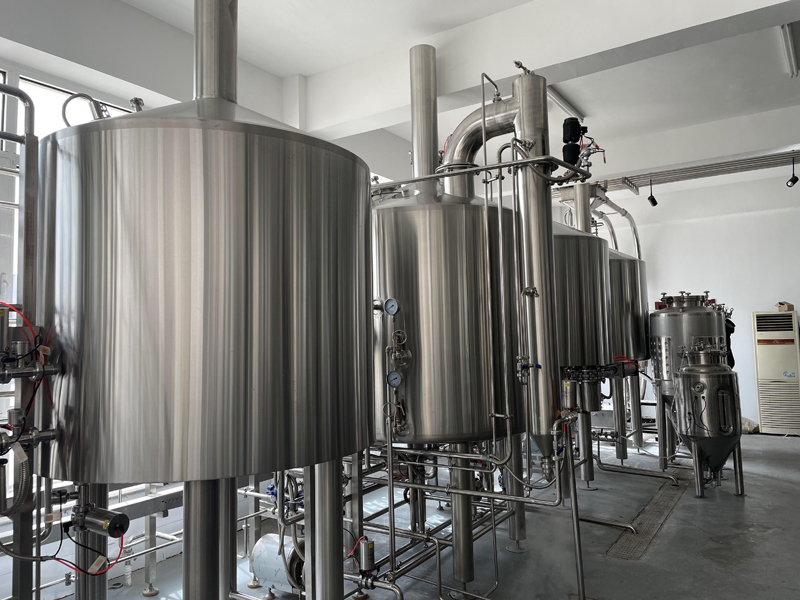The boiling stage in brewing is a multifaceted process that serves several critical purposes, each contributing to the overall quality and character of the final beer. Understanding these purposes helps brewers appreciate the importance of a well-executed boil and how it impacts the brewing process.
Sterilization
One of the primary purposes of boiling the wort is sterilization. The high temperatures involved in boiling effectively kill off any unwanted microorganisms, such as bacteria and wild yeast, that may have been introduced during the earlier stages of brewing. This step ensures that the wort remains uncontaminated, providing a clean environment for the desired yeast to ferment beer without competition or interference from other organisms.
Isomerization of Hops
Hops are a key ingredient in beer, contributing bitterness, flavor, and aroma. During the boil, the alpha acids present in hops undergo isomerization, a chemical reaction that transforms these acids into their bitter, soluble forms. This process allows the beer to achieve the desired level of bitterness to balance the sweetness of the malt. The timing and amount of hops added during the boil determine the bitterness and hop profile of the final product.
Protein Coagulation
As the wort boils, proteins present in the malt begin to coagulate and form larger particles. This process, known as the “hot break,” results in the aggregation of proteins and polyphenols that can cause haziness and instability in the beer if left in solution. The coagulated proteins are subsequently removed when the wort is transferred to the fermentation tank, helping to clarify the beer and improve its stability and shelf life.
Volatilization of Unwanted Compounds
Boiling also helps in the volatilization and evaporation of unwanted compounds that can negatively affect the flavor and aroma of the beer. One such compound is dimethyl sulfide (DMS), which can impart a cooked corn or cabbage-like off-flavor. DMS is naturally present in malt but is driven off during the boil. A vigorous boil ensures that DMS and other undesirable volatile compounds are effectively removed, leading to a cleaner-tasting beer.
Maillard Reactions
The Maillard reaction, a form of non-enzymatic browning, occurs during the boil and contributes to the development of complex flavors and colors in the beer. This reaction between amino acids and reducing sugars in the wort produces melanoidins, which add depth and richness to the beer’s flavor profile. The extent of Maillard reactions can be influenced by the duration and intensity of the boil, as well as the composition of the wort.
Concentration of Wort
Boiling also serves to concentrate the wort by evaporating excess water. This concentration process increases the specific gravity of the wort, resulting in a higher potential alcohol content in the final beer. Additionally, concentrating the wort intensifies the flavors and aromas of the ingredients, creating a more robust and flavorful beer. Careful control of the boil time and intensity is necessary to achieve the desired concentration without overdoing it, which could lead to excessive caramelization or off-flavors.
The boiling process in brewing is integral to achieving a high-quality final product. It sterilizes the wort, promotes the isomerization of hops, facilitates protein coagulation, volatilizes unwanted compounds, induces Maillard reactions, and concentrates the wort. Each of these functions contributes to the clarity, stability, flavor, and aroma of the beer, making the boil a critical step in the brewing process.

II.Equipment Needed for Boiling
Conducting a proper boil in brewing requires the right equipment to ensure the process is efficient and effective. The following essential tools are necessary to achieve a successful boil:
Brew Kettle
The brew kettle is the centerpiece of the boiling process. It is a large pot where the wort is heated to a boil. When selecting a brew kettle, consider the following factors:
& Size: Choose a kettle with a capacity that accommodates your batch size. It should be large enough to prevent boil-overs, typically at least 25-50% larger than your batch volume.
& Material: Stainless steel is the preferred material for brew kettles due to its durability, resistance to corrosion, and ease of cleaning. It does not react with wort components, ensuring the beer’s flavor remains untainted.
Heat Source
A reliable heat source can bring the wort to a boil and maintain a consistent boil throughout the process. The choice of heat source depends on your brewing setup:
& Gas Burners: Propane or natural gas burners provide strong, adjustable heat and are widely used in homebrewing and commercial setups. They offer rapid heating and precise control, making them ideal for achieving a vigorous boil. Ensure the burner is rated for the kettle size to avoid under or over-heating.
& Electric Heating Elements: Electric elements are convenient for indoor brewing and offer precise temperature control. They are often integrated into electric brew kettles or used as immersion heaters. When using electric elements, ensure they are compatible with your kettle and provide sufficient power for your batch size.
& Direct Fire Heating Elements: Direct fire heating elements are placed underneath the brew kettle to heat the kettle. These elements have a simpler design and are very efficient. They are commonly used in medium to large commercial brewing systems. Proper maintenance and calibration of these elements will avoid hot spots and ensure even heating.
Thermometer
Accurate temperature monitoring is essential during the boiling process to ensure the wort reaches and maintains the desired boiling point. There are several types of thermometers suitable for brewing:
& Dial Thermometers: These analog thermometers are easy to read and can be mounted directly on the brew kettle. Look for models with a long probe and calibration features.
& Digital Thermometers: Digital thermometers offer fast and precise temperature readings. Some models come with a probe that can be inserted into the wort, while others are handheld with a probe wire. Digital thermometers often have additional features like timers and alarms.
& Infrared Thermometers: These non-contact thermometers allow you to measure the wort’s surface temperature quickly. While convenient, they may not provide as accurate readings as probes immersed in the wort.
Stirring Paddle
The stirring paddle ensures even heat distribution, prevents scorching, and helps integrate hop additions:
& Material: Stirring paddles are typically made from food-grade plastic, stainless steel, or wood. Stainless steel paddles are durable and easy to sanitize, while plastic paddles are lightweight and inexpensive. Wood paddles are traditional but can be harder to sanitize thoroughly.
& Length and Design: Choose a paddle long enough to reach the bottom of your brew kettle without risking burns. A paddle with a slotted design or holes can help break up clumps and promote better mixing.
& Ergonomics: Look for paddles with comfortable grips and sturdy construction to make stirring easier and more efficient.
Having the right equipment allows for a proper boil in your brewing. A high-quality brew kettle, a reliable heat source, an accurate thermometer, and an effective stirring paddle will ensure that your boil is consistent and efficient and help improve the overall quality of your beer. Investing in quality equipment will not only make the brewing process easier to manage, but it will also enhance the flavor, clarity, and consistency of the final product.

III.Managing the Boil
Effective control of boiling can achieve the desired results of brewing. This stage ensures that the wort develops the necessary characteristics for a high-quality beer. Key aspects of managing the boil include controlling boil intensity, monitoring temperature, and managing the evaporation rate. Here’s a detailed guide on how to manage these aspects:
Boil Intensity
& Achieving a Rolling Boil: The goal during the boil is to maintain a rolling boil, where the wort bubbles vigorously and moves continuously. This strength enables the correct isomerization of hop acids, which are responsible for beer’s bitter taste.
& Avoiding Excessive Boiling: While a vigorous boil is necessary, boiling too intensely can lead to excessive evaporation, increased caramelization, and potential off-flavors. It can also cause a boil-over, wasting valuable wort and making a mess. Adjust the heat to maintain a steady, controlled rolling boil rather than an overly aggressive one.
& Hot Break Management: During the initial phase of the boil, proteins and other compounds coagulate and form foam, known as the hot break. Managing this foam can prevent boil-over. Reduce the heat slightly if the foam rises too quickly, or use a spray bottle with water to break it up. Stirring gently can also help control foam formation.
Monitoring Temperature
& Consistent Temperature: Maintaining a consistent temperature is key to ensuring a successful boil. The boiling point of wort is typically around 212°F (100°C) at sea level, but this can vary with altitude. Use a reliable thermometer to monitor the temperature throughout the boil.
& Thermometer Placement: Position the thermometer properly to get an accurate reading. If using a dial thermometer mounted on the kettle, ensure it’s calibrated correctly and positioned so it reads the temperature of the liquid, not just the surface or near the heat source. For digital thermometers with probes, immerse the probe in the center of the wort.
& Adjusting Heat: Be prepared to adjust the heat source to maintain the rolling boil. Factors such as kettle size, ambient temperature, and wort volume can influence how much heat is needed. Continuously monitor and tweak the heat as necessary to keep the boil consistent without becoming too aggressive.
Evaporation Rate
& Understanding Evaporation: During the boil, water evaporates from the wort, concentrating the sugars and flavors. A typical evaporation rate is around 10-15% of the total volume per hour. This rate can vary based on boil intensity, kettle shape, and environmental conditions.
& Managing Evaporation: To achieve the desired wort concentration and gravity, it’s essential to manage the evaporation rate. Maintain a steady rolling boil to ensure consistent evaporation. Be mindful of boil duration, longer boils increase evaporation and concentrate the wort further.
& Measuring and Adjusting: Measure the pre-boil and post-boil wort volumes to calculate the actual evaporation rate. If the evaporation rate is too high, you might need to add water to reach the desired final volume and gravity. Conversely, if the rate is too low, you can extend the boil slightly to achieve the target concentration.
& Lid Management: Leaving the kettle lid open during boiling allows volatile compounds, such as dimethyl sulfide (DMS), to escape. Covering the kettle may trap these compounds, causing odors.
If you need to control excessive evaporation, you can partially cover the kettle, but make sure there is adequate ventilation.
Properly managing the boil is a critical component of successful brewing. By controlling boil intensity, monitoring temperature accurately, and managing the evaporation rate, brewers can ensure the wort develops the desired characteristics, leading to a high-quality final product. These steps help optimize hop utilization, flavor development, and wort concentration, setting the foundation for a well-balanced and flavorful beer.

IV. Summary
Conducting a proper boil is a critical step in brewing that significantly influences the quality of the final beer. This process involves carefully bringing the wort to a rolling boil, maintaining the correct boil intensity and making timely hop additions to achieve the desired bitterness, flavor, and aroma. Essential equipment such as a brew kettle, heat source, thermometer, and stirring paddle are necessary for effective boiling. Preparation includes measuring ingredients, sanitizing equipment, and setting up an organized workspace. Post-boil considerations like whirlpooling and rapid cooling ensure clarity and prevent contamination. Troubleshooting common issues such as boil-overs, hazy beer, and off-flavors involves vigilant monitoring and proactive measures. By mastering these techniques and maintaining control throughout the boil, brewers can produce high-quality, flavorful, and clear beer. Proper boiling is foundational to the brewing process, setting the stage for successful fermentation and a satisfying final product.

 Jinan Alston Equipment Co.,Ltd.
Jinan Alston Equipment Co.,Ltd.